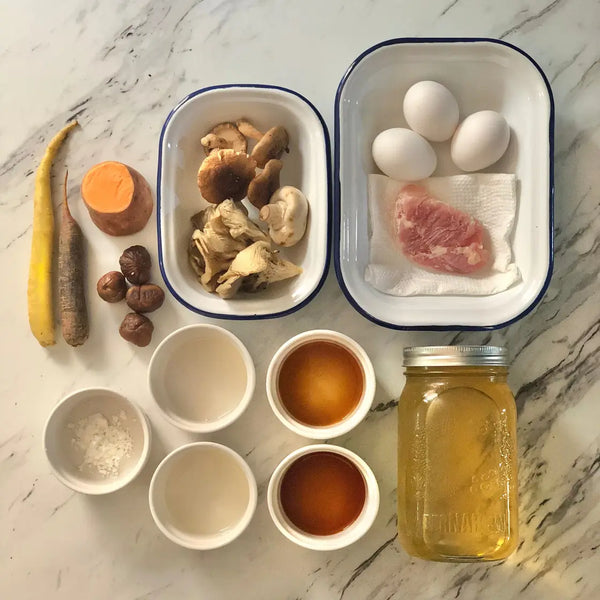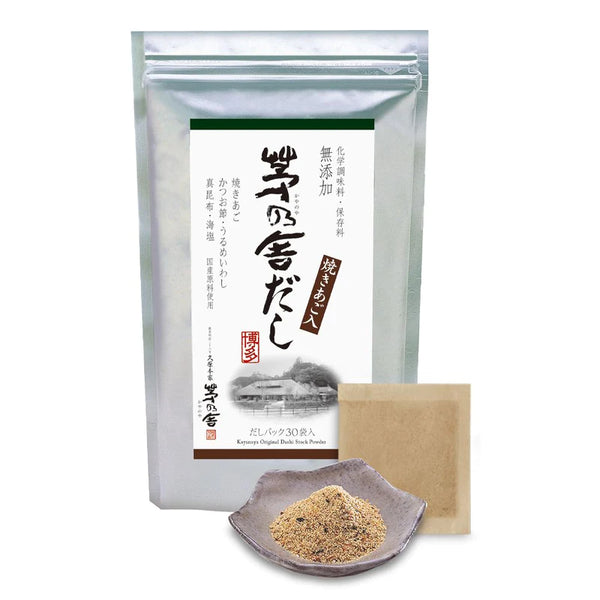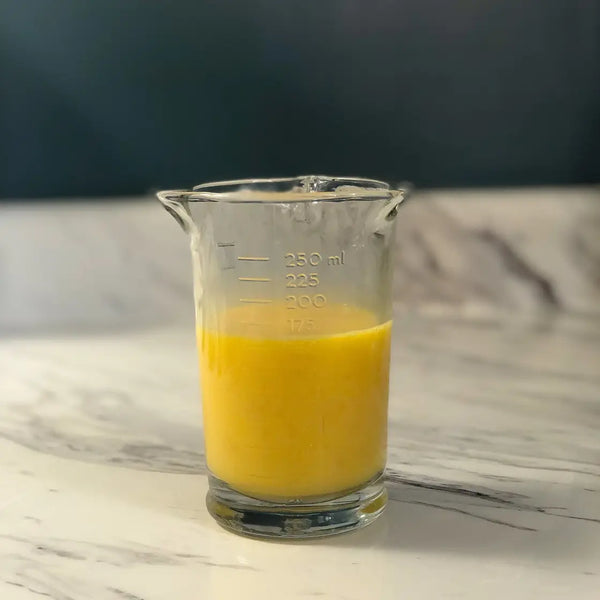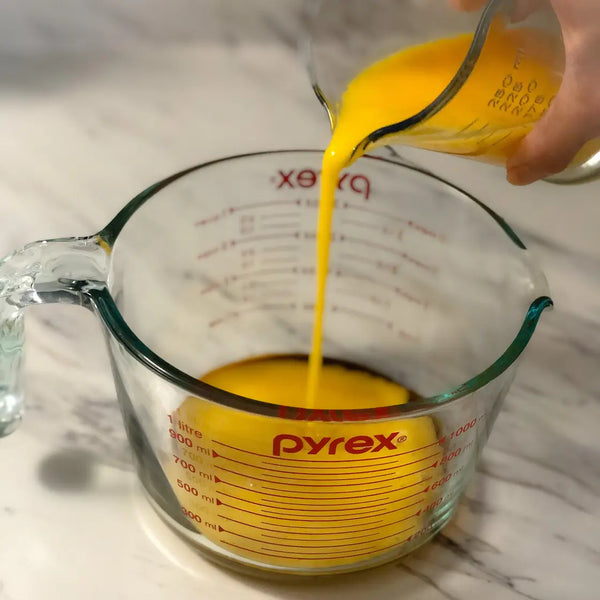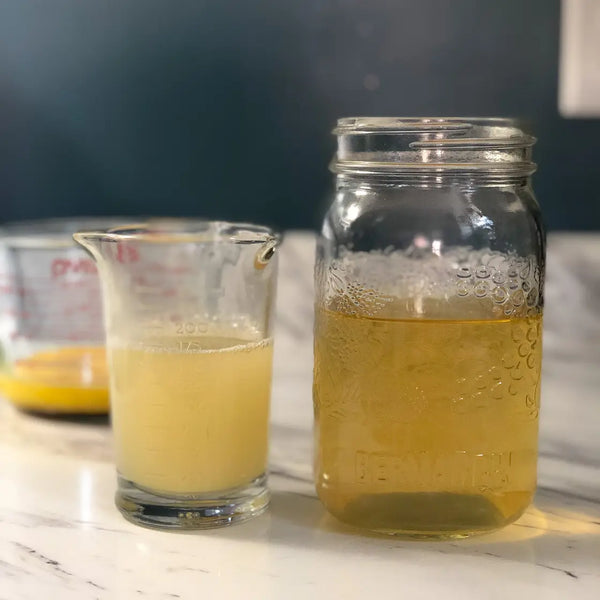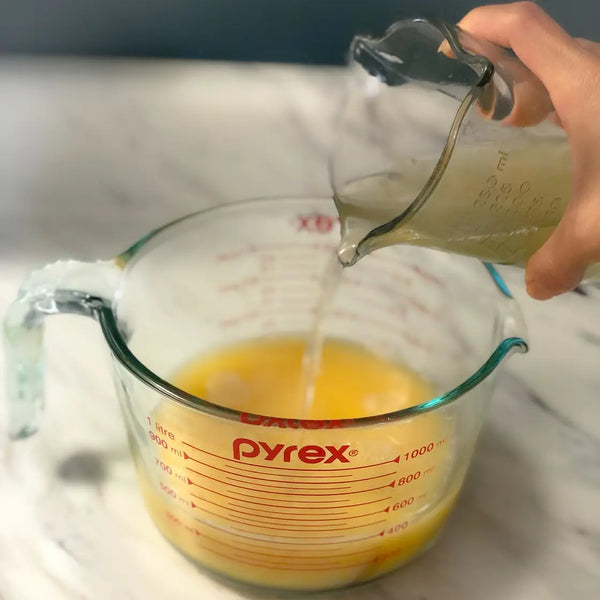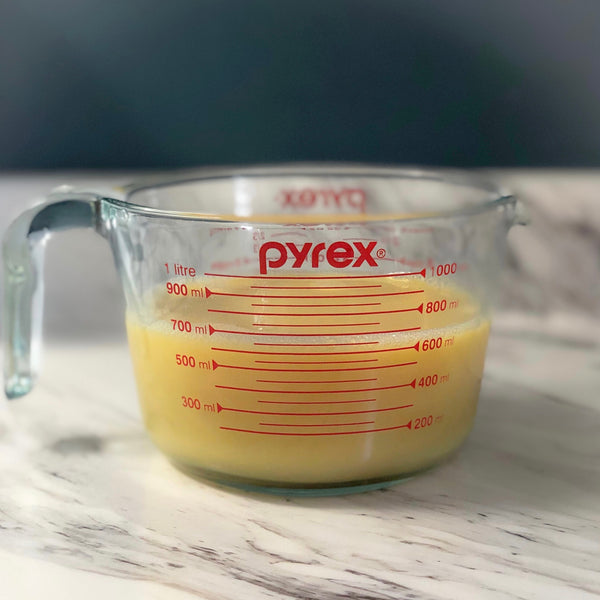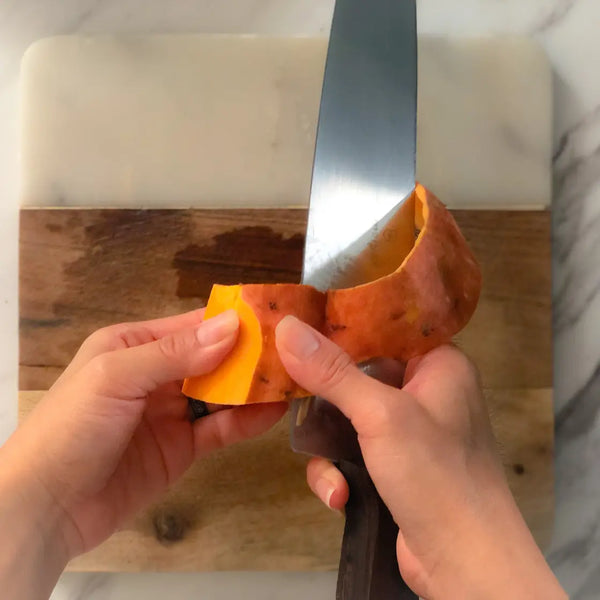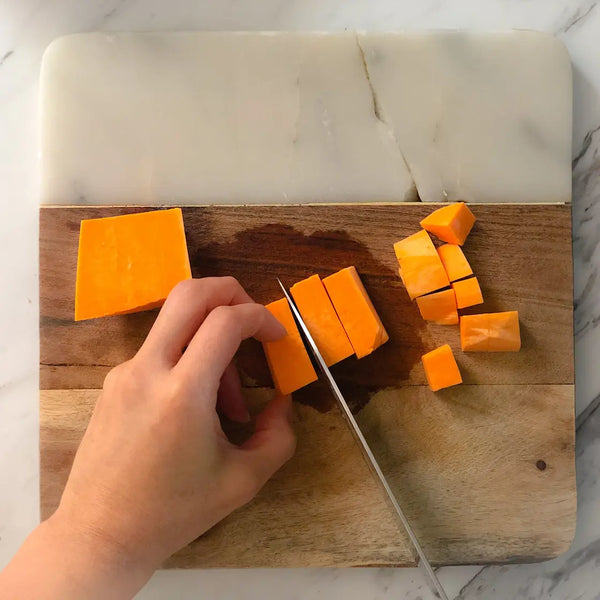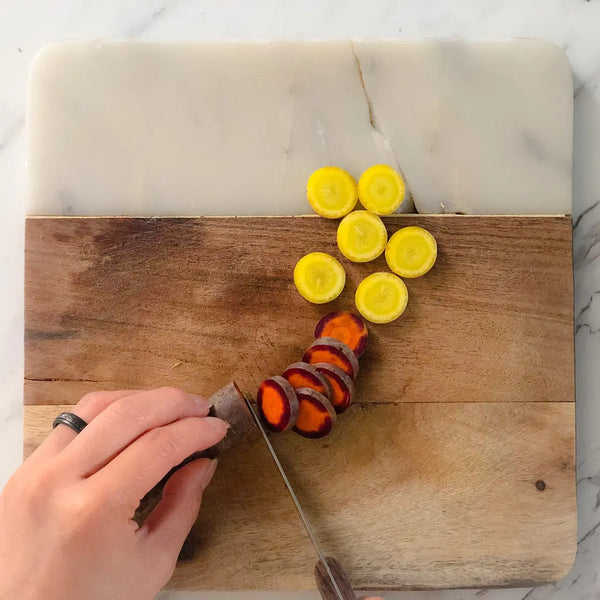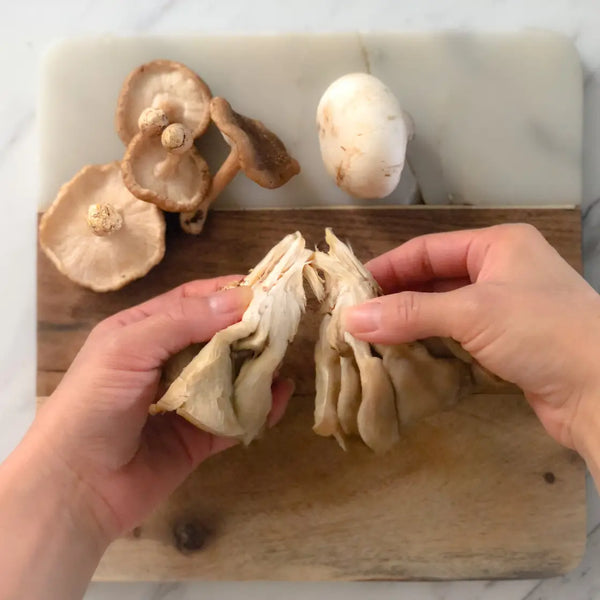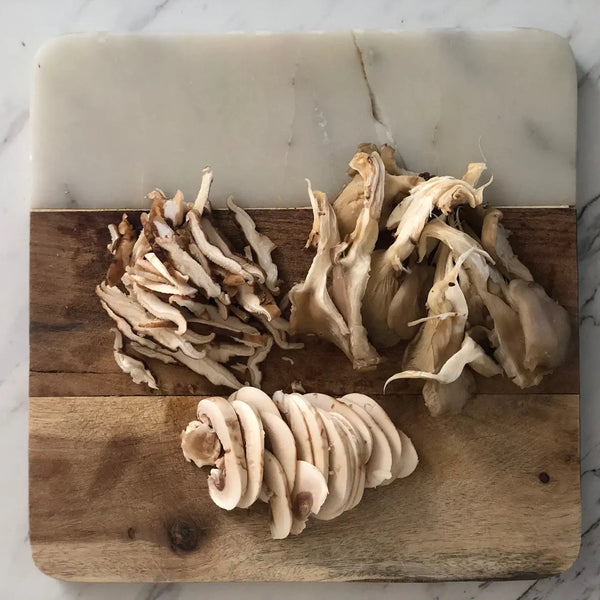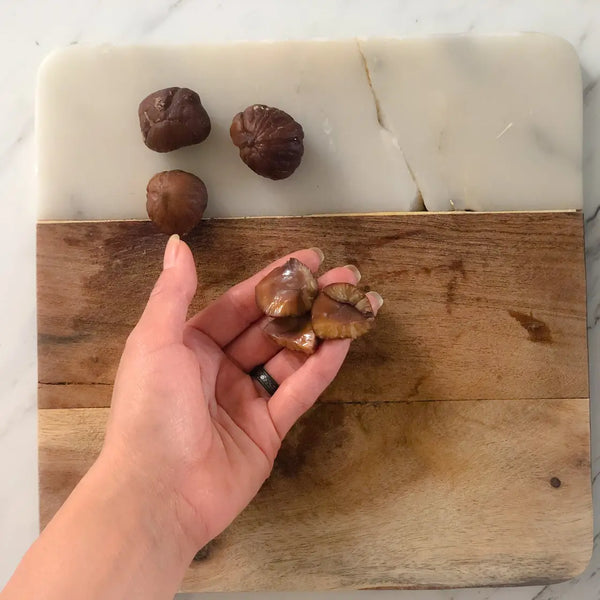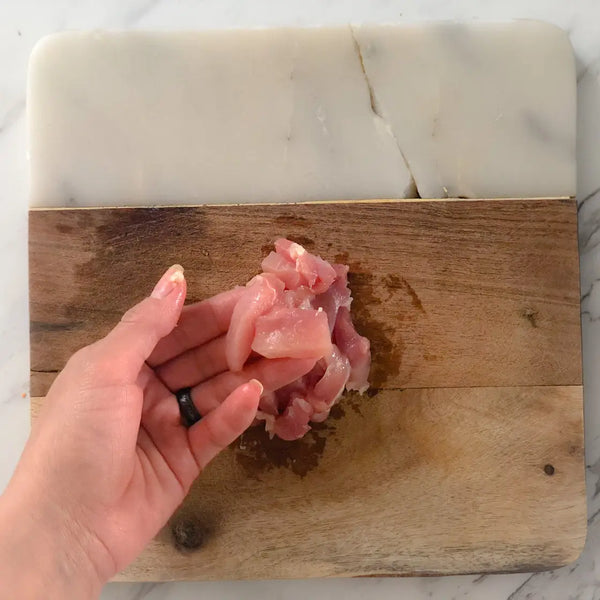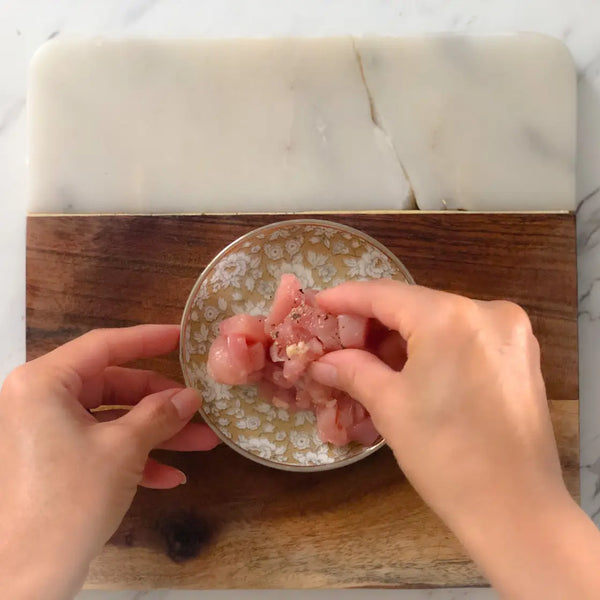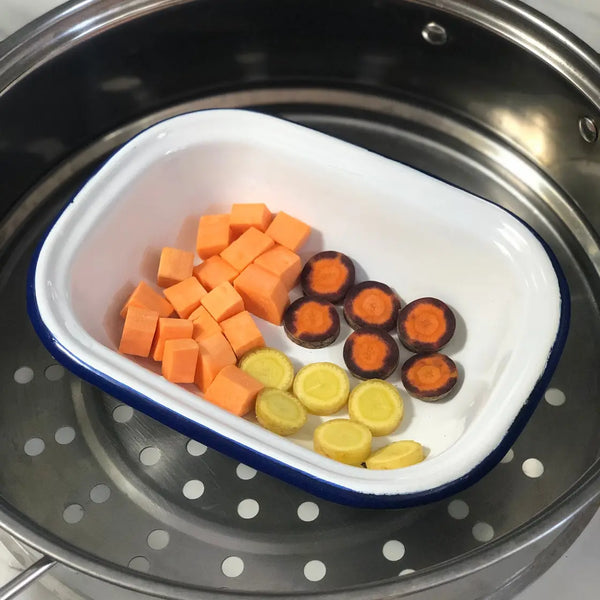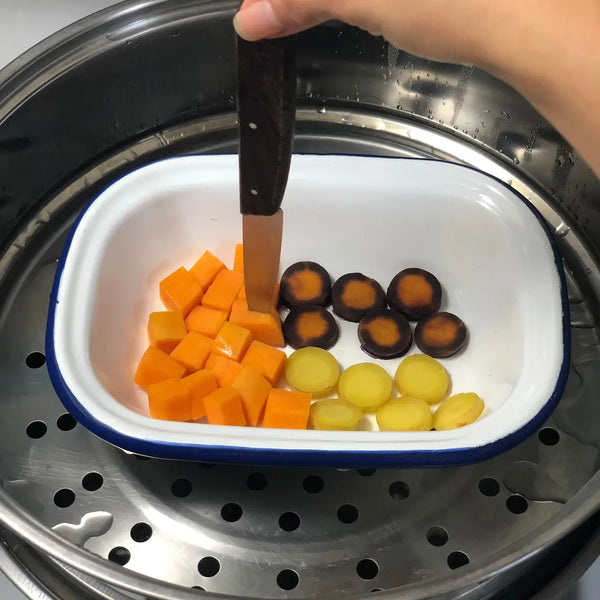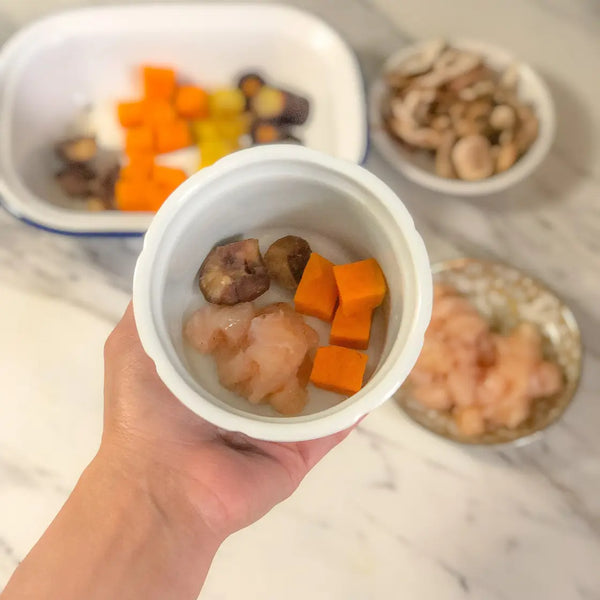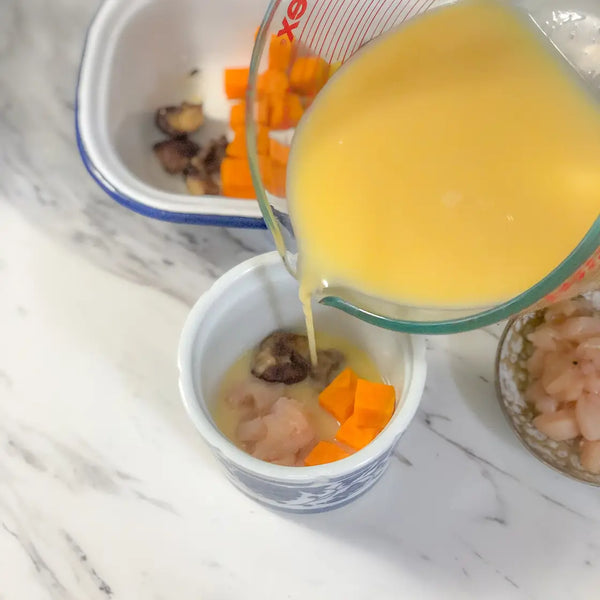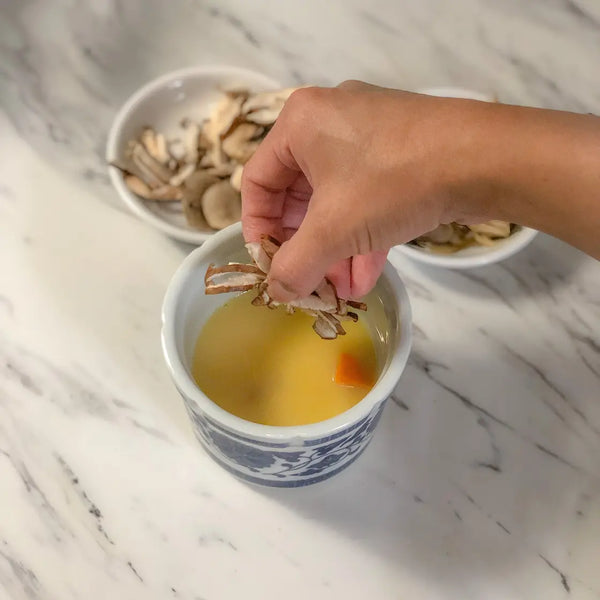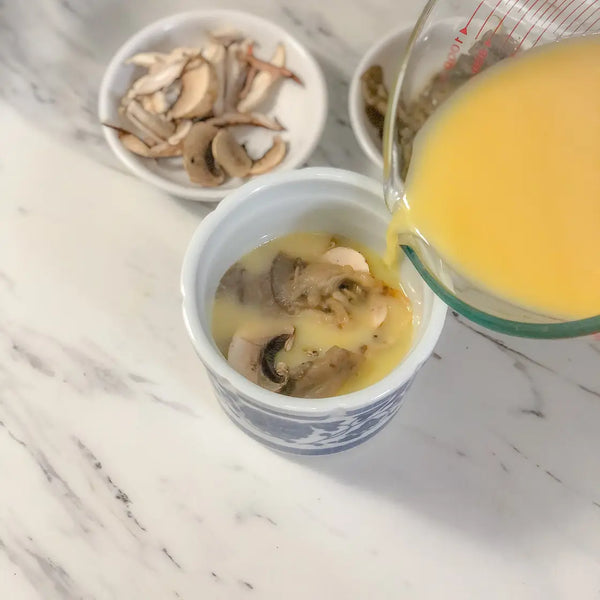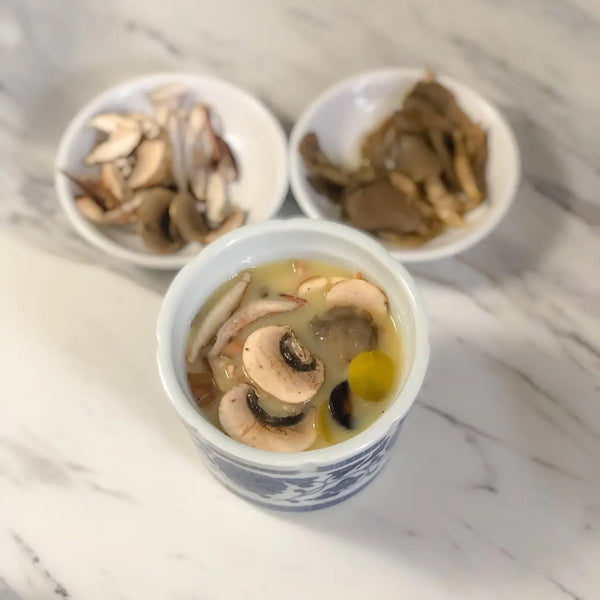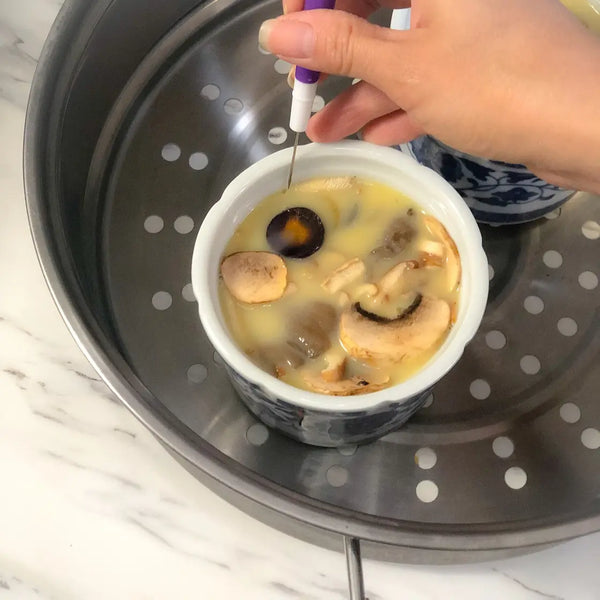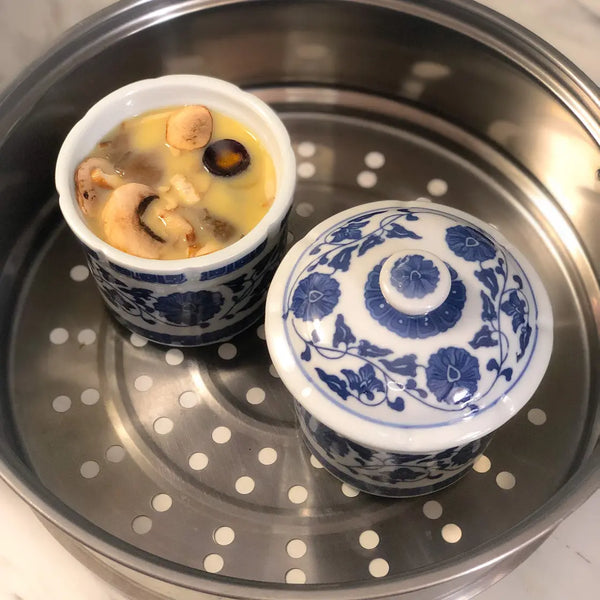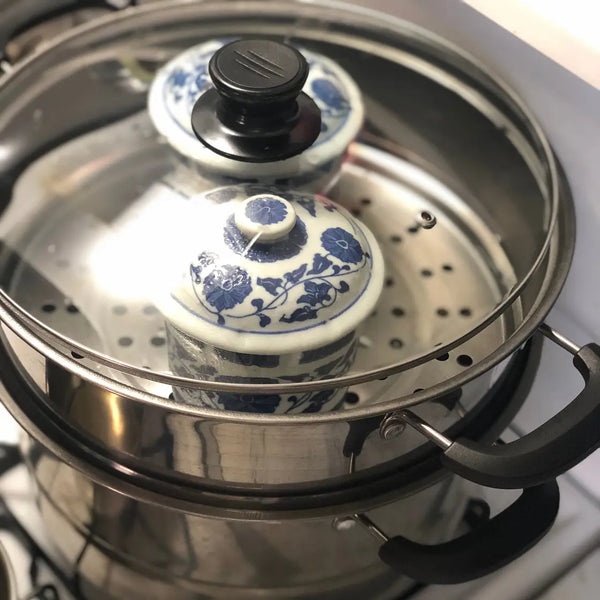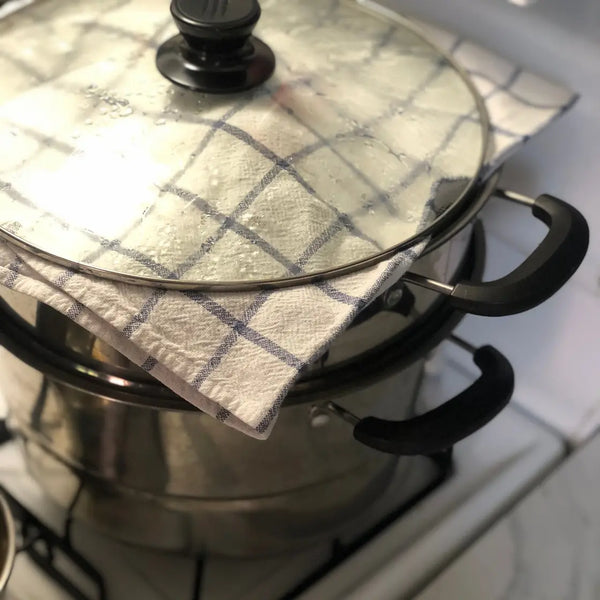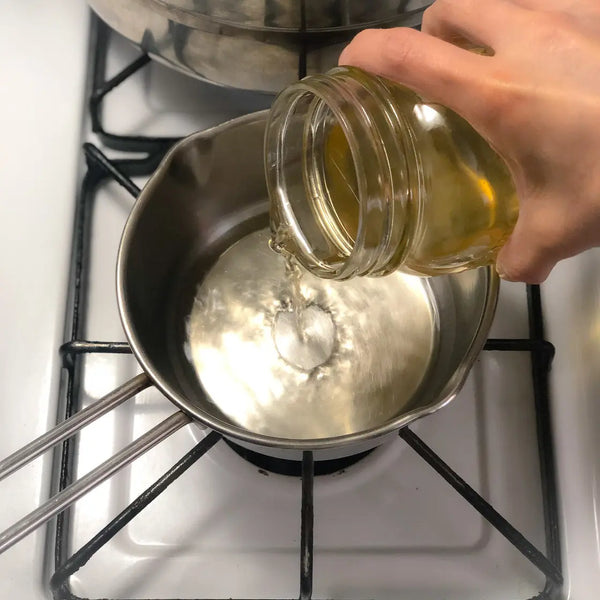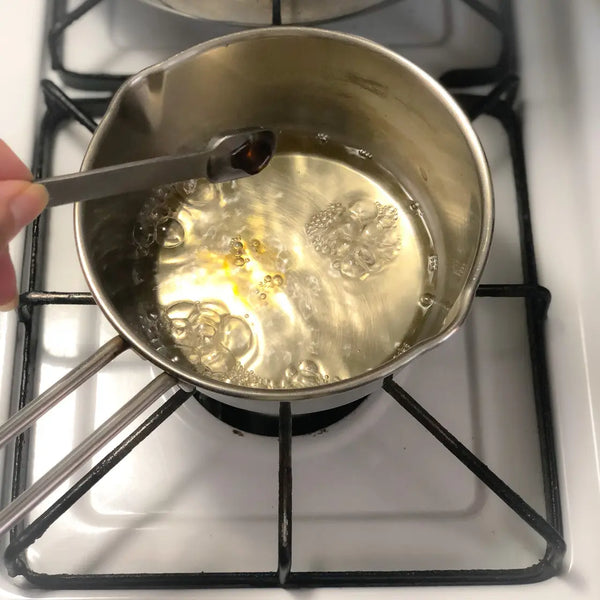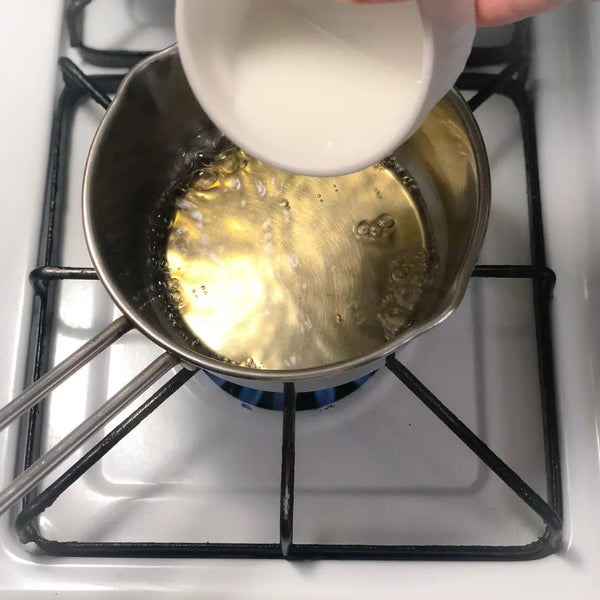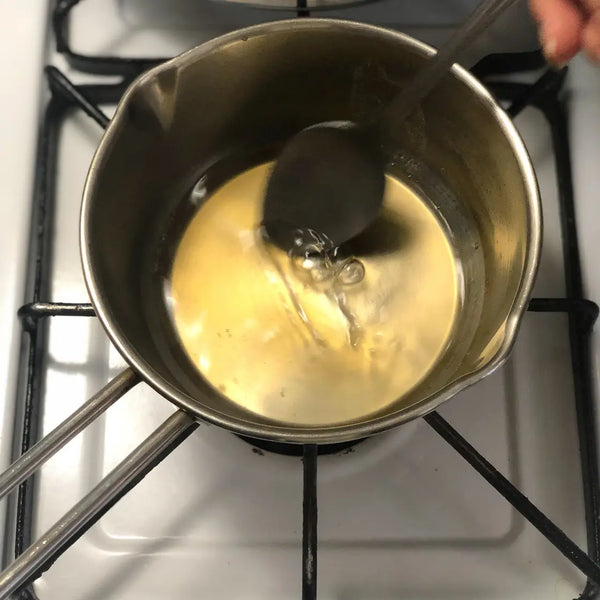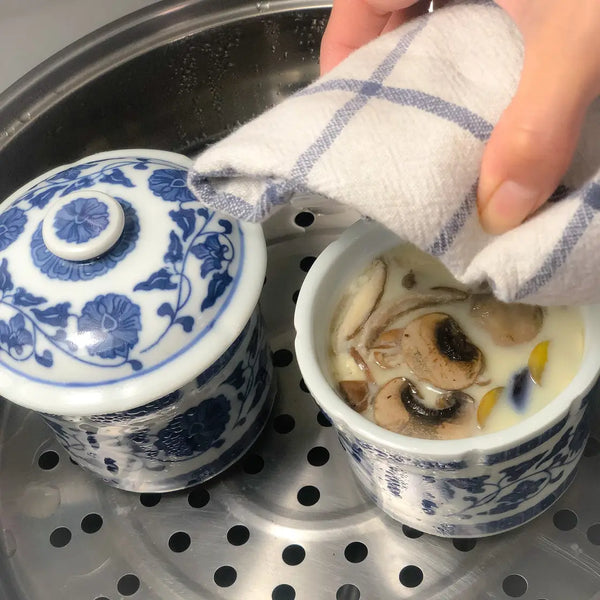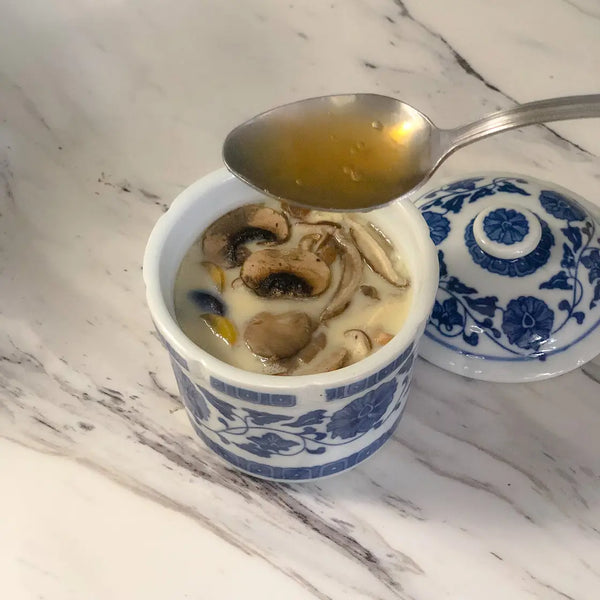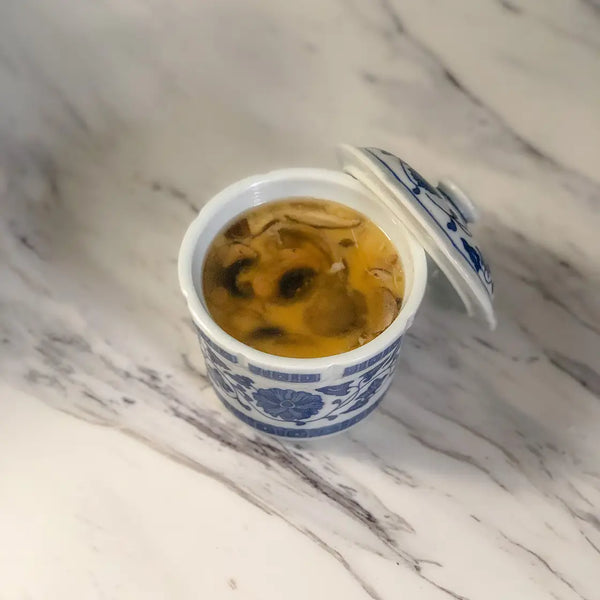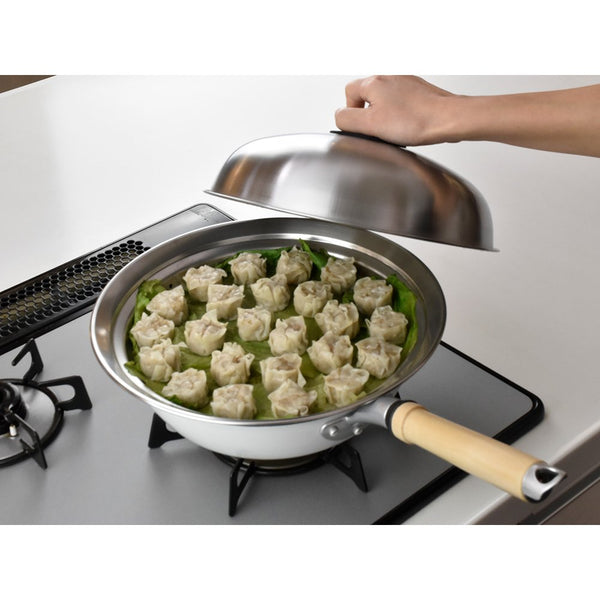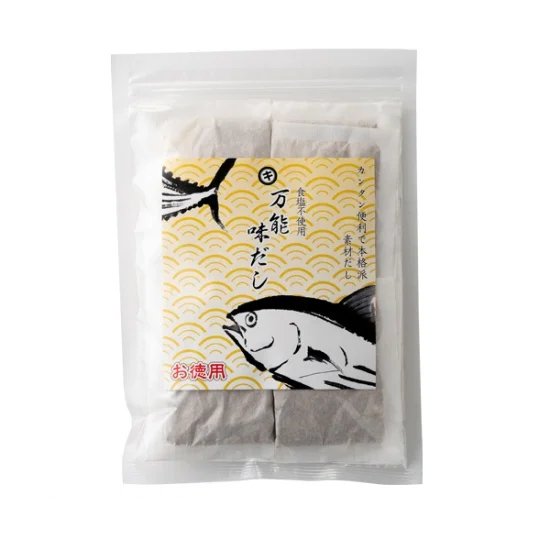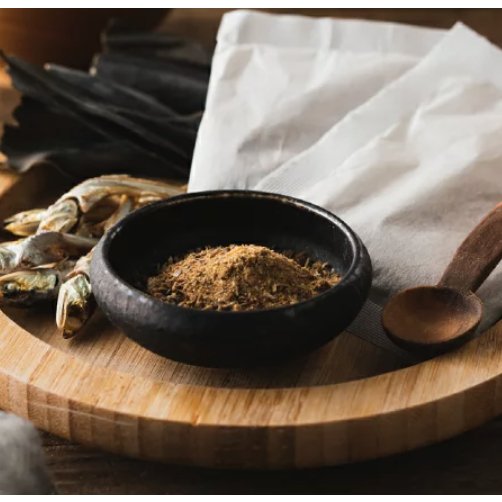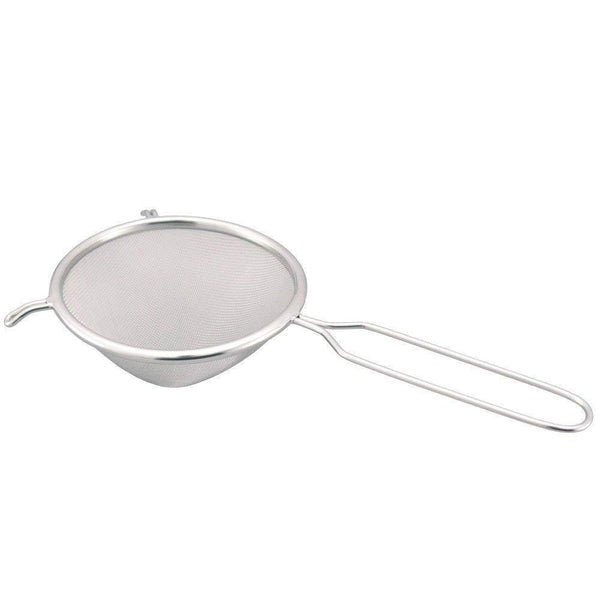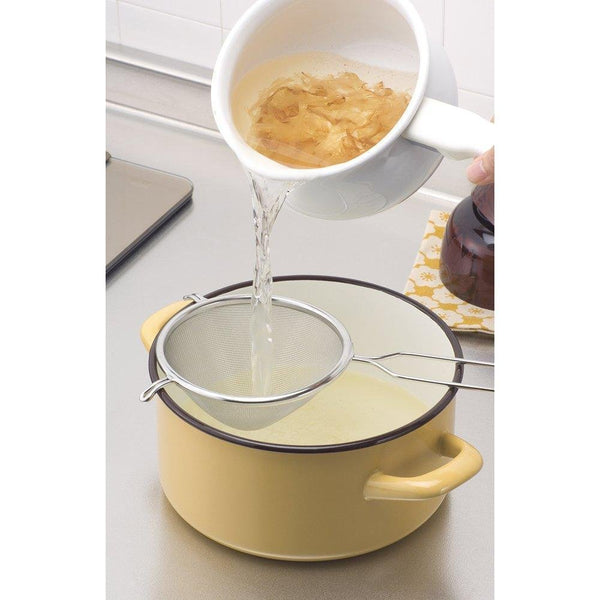
Chawanmushi is like a soothing, creamy delight – smooth and incredibly versatile. Essentially, it's a savory egg custard with a twist, thanks to some fantastic ingredients.
So, what's the story behind chawanmushi? Well, the name reveals its charm: "chawan" means teacup, and "mushi" translates to steamed. It's a dish that's created with care, gently steamed in these cozy cups.
Now, let's talk about the magic that happens with the custard. It all begins with a blend of eggs, dashi, along with a hint of soy sauce and mirin. However, the real excitement unfolds when you introduce the ingredients. Common additions include sliced shiitake mushrooms, plump shrimp, tender chicken, Kamaboko (fish cake), ginkgo nuts, and mitsuba (Japanese parsley). It's like a symphony of flavors in a tiny vessel. This time, we're introducing an autumn-inspired chawanmushi recipe!
Now, let's discuss the cooking process. It's all about precision. Gently pour this luscious mixture into small cups and let them steam softly. This is the secret to achieving that heavenly, velvety texture that chawanmushi is famous for.
But it's not just about the taste; it's a visual masterpiece too. People often garnish it with a sprig of mitsuba or a pinch of grated yuzu peel, turning it into an edible work of art.
Chawanmushi is like a poetic performance in the world of Japanese cuisine. It captures the harmony of ingredients, the changing seasons, and the deep umami of dashi stock. Every bite is like a delicate brushstroke on the canvas of your palate.
Whether you're enjoying it in a traditional setting or with a modern twist, chawanmushi is a culinary treasure waiting to be explored. It's like a whisper of flavor, a miniature masterpiece, and a symbol of the culinary finesse that defines Japanese cuisine. So go ahead, take a bite, and let the subtle beauty of chawanmushi enchant your senses.

